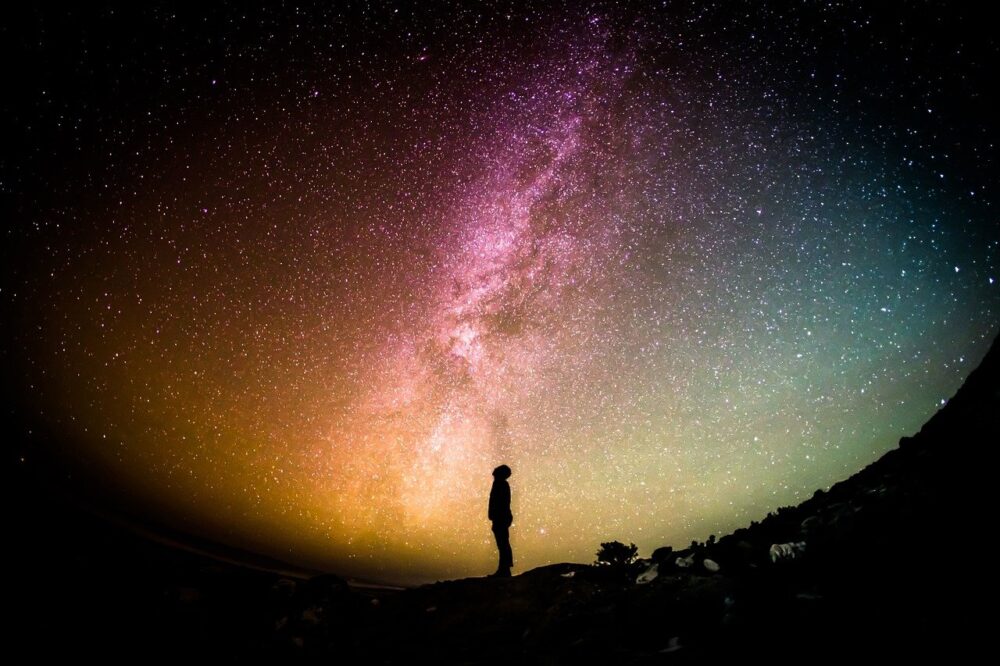Everyone remembers the first time they wished on a shooting star, recognized Mars by its reddish tint, or realized the glimmering, dusty sweep across the blackness was actually the Milky Way. Peering into the night sky has a certain magic that has continually drawn our gazes upwards and outwards from every corner of the Earth. But what are we ever actually looking at? Energized particles flinging around in nothingness? Fiery space rocks? Collections of energy? There are many definitions for what we see in the night sky, but perhaps most striking is not what they are but when they are: looking into space means peering into the past.
Just like any energy traveling through the media of time and space, light does not appear instantaneously. It takes time, even an infinitesimal moment, to get from the source to the destination.
Just like any energy traveling through the media of time and space, light does not appear instantaneously. It takes time, even an infinitesimal moment, to get from the source to the destination. For example, it takes 2.5 seconds for light to travel to the Moon and back and 3 whole minutes for light to travel to Mars and back. Light from the Andromeda Galaxy, a twin of our own Milky Way, takes 2.5 million years to travel across space into our telescopes. Also called “lookback time,” this heightens the romanticism of retrospection, the thought that gazing into space reveals the occurrences from centuries, even millennia, ago. But how old is the light we are seeing? Does this constitute looking into the past? These are questions that scientists have been trying to answer for decades.
Just as physicists and astronomers have developed classical theories of time and space, Albert Einstein crashed into the field in the early 1900s with wild theories bending previously linear concepts. He postulated that time and space were interrelated, woven together as a space-time fabric. Gravity — the same force involved with dribbling a basketball, falling down stairs, and moving ocean tides — causes this fabric to stretch and distort, introducing curvature into the space-time surface. Light follows this curvature as it travels through space and, to an external observer, follows an inexplicable, distorted path. Recall one of those spiral wishing wells: you set a coin spinning on its edge at the outside of the well, and it will spiral down towards the center of the well, eventually falling into a small hole at the center. Objects of significant mass act like the hole at the center of the spiral wishing well, bending the nearby space and drawing objects into circular motion around them. Since light travels at a fixed speed no matter what — another groundbreaking discovery by Einstein — time itself must slow down as light travels into a gravitational well. Therefore, when looking into space past billions of these wells caused by massive stars, galaxies, and black holes, time is continually bending and twisting, further complicating the situation.
The billions of light years of the dynamic universe build a storied, nonlinear path for light to travel through, twisting and bending by the laws of general relativity.
All of this conceptual thinking is swell, but does it answer the question: does looking into the universe equate looking back in time? The answer is yes, what we see is technically from the past. We are seeing light from astronomical objects as they were when that light was emitted, anywhere between a few seconds to billions of years ago. The billions of light years of the dynamic universe build a storied, nonlinear path for light to travel through, twisting and bending by the laws of general relativity. So the next time you gaze at the night sky, appreciate the invisible forces in space, and contemplate the beautiful complexity behind each tiny pinprick of light.
Image Source: Pixabay

